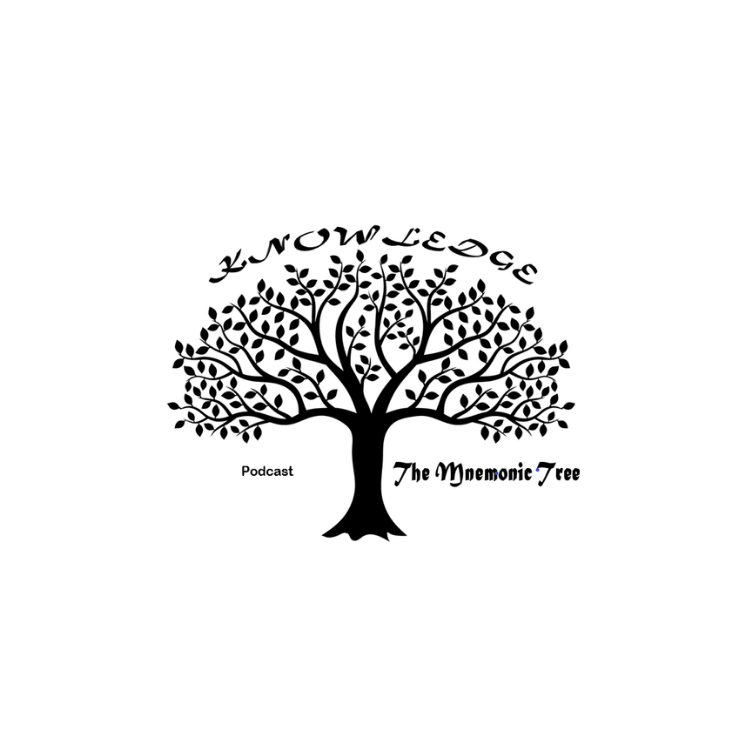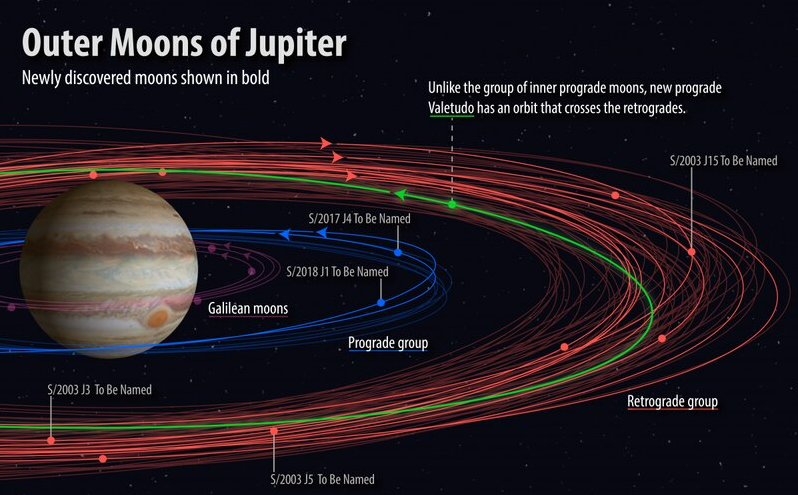Ep. 116: Moons of Jupiter
Intro
Hello and Welcome to this episode of the podcast, "The Mnemonic Tree", where we add a single mnemonic leaf to our Tree of Knowledge.
I’m Jans you Mnemonic Man and today's episode will be on the many moons of Jupiter.
Jupiter is the largest planet in our solar system and fifth in line from the Sun. At present, it has 95 moons that have been officially recognised by the International Astronomical Union. However, there are potentially hundreds of objects sized between one meter to a kilometre that inhabit the Jovian system.
The four main moons of Jupiter are the Galilean moons that consist of Ganymede, Io, Callisto and Europa which were named after the Italian astronomer Galileo Galilei (gal-il-ay-o gal-ill-lay) who observed them in 1610. Each one of these moons has its own unique characteristics ranging from active volcanoes, icy crusts to subsurface oceans that could possibly entertain that thing called life.
So, with that being said, we will begin with a summary from Wikipedia.
Wikipedia Summary
There are 95 moons of Jupiter with confirmed orbits as of 23 October 2023.[1][note 1] This number does not include a number of meter-sized moonlets thought to be shed from the inner moons, nor hundreds of possible kilometre-sized outer irregular moons that were only briefly captured by telescopes.[4] All together, Jupiter's moons form a satellite system called the Jovian system. The most massive of the moons are the four Galilean moons: Io, Europa, Ganymede, and Callisto, which were independently discovered in 1610 by Galileo Galilei and Simon Marius and were the first objects found to orbit a body that was neither Earth nor the Sun. Much more recently, beginning in 1892, dozens of far smaller Jovian moons have been detected and have received the names of lovers (or other sexual partners) or daughters of the Roman god Jupiter or his Greek equivalent Zeus. The Galilean moons are by far the largest and most massive objects to orbit Jupiter, with the remaining 91 known moons and the rings together composing just 0.003% of the total orbiting mass.
Of Jupiter's moons, eight are regular satellites with prograde and nearly circular orbits that are not greatly inclined with respect to Jupiter's equatorial plane. The Galilean satellites are nearly spherical in shape due to their planetary mass, and are just massive enough that they would be considered major planets if they were in direct orbit around the Sun. The other four regular satellites, known as the inner moons, are much smaller and closer to Jupiter; these serve as sources of the dust that makes up Jupiter's rings. The remainder of Jupiter's moons are outer irregular satellites whose prograde and retrograde orbits are much farther from Jupiter and have high inclinations and eccentricities. The largest of these moons were likely asteroids that were captured from solar orbits by Jupiter before impacts with other small bodies shattered them into many kilometre-sized fragments, forming collisional families of moons sharing similar orbits. Jupiter is expected to have about 100 irregular moons larger than 1 km (0.6 mi) in diameter, plus around 500 more smaller retrograde moons down to diameters of 0.8 km (0.5 mi).[5] Of the 87 known irregular moons of Jupiter, 38 of them have not yet been officially named.
Extracted from: [https://en.wikipedia.org/wiki/Moons_of_Jupiter]
Mnemonic
6 Moons of Jupiter Mnemonic – Ganymede’s Inner Core Exhibits Three Areas
(Picture the moon Ganymede which has three main layers. A metallic iron core, a rocky mantle and an icy shell)
1. Ganymede
2. Io
3. Callisto
4. Europa
5. Thebe
6. Amalthea
Five Fun Facts
1. Jupiter is named after the king of the ancient Roman gods, and its iconic Great Red Spot is actually a giant storm bigger than our Earth that has been ongoing for hundreds of years.
2. Jupiter is the biggest planet in our solar system being approximately 11 times wider than Earth. It is the fifth planet from the sun and has the shortest day in the solar system at just 10 hours.
3. Jupiter has 95 moons that are officially recognised by the International Astronomical Union. The four largest moons in order are Ganymede, Callisto, Io and Europa. They were first observed in 1610 by astronomer by Galileo Galilei using an early version of the telescope.
4. Jupiter’s equator tilt with respect to its orbital path around the Sun is just three degrees, hence it spins nearly upright. This results in very mild seasons whereas the Earth has a tilt of 23.5 degrees and as a result has more pronounced seasons.
5. Being a gas giant Jupiter is not conducive to life as we know it. However, some of its moons may hold a possibility. The moon Europa holds the greatest possibility as there is a vast ocean just beneath its icy crust which could possibly support life. Second on the list is Saturn’s moon Enceladus which is also thought to have subsurface liquid water.
Three Question Quiz
Q.1. Jupiter, Saturn, Uranus and Neptune are gas giants. What are Mercury, Venus, Earth and Mars referred to as?
Q.2. How long ago did Jupiter form? Options are 450 million years ago, 950 million years ago or 4.5 billion years ago
Q.3. Which of the four Galilean moons is the most volcanic?
Bonus Q. Jupiter is mainly formed from what two elements? Options are Nitrogen and Sulphur, Nitrogen and Hydrogen or Hydrogen and Helium
Bonus Q. Which spacecraft visited Jupiter? Options are Viking, Voyager or Vixen
Mnemonic Recap
6 Moons of Jupiter Mnemonic – Ganymede’s Inner Core Exhibits Three Areas
(Picture the moon Ganymede which has three main layers. A metallic iron core, a rocky mantle and an icy shell)
1. Ganymede
2. Io
3. Callisto
4. Europa
5. Thebe
6. Amalthea
Three Question Quiz Answers
Q.1. Jupiter, Saturn, Uranus and Neptune are gas giants. What are Mercury, Venus, Earth and Mars referred to as?
A. Inner (rocky or terrestrial) planets
Q.2. How long ago did Jupiter form? Options are 450 million years ago, 950 million years ago or 4.5 billion years ago
A. 4.5 billion years ago along with the rest of our solar system
Q.3. Which of the four Galilean moons is the most volcanic?
A. Io with hundreds of volcanoes, some erupting many kilometres high
Bonus Q. Jupiter is mainly formed from what two elements? Options are Nitrogen and Sulphur, Nitrogen and Hydrogen or Hydrogen and Helium
A. Hydrogen and Helium which is very similar to that of the Sun
Bonus Q. Which spacecraft visited Jupiter? Options are Viking, Voyager or Vixen
A. Voyager 1 and 2 visited Jupiter in March and July of 1979. Viking went to Mars and Vixen is a reindeer
Now just speaking of trips into space. You may have remembered back in the space race when there was the US, Russia and Ireland. Stick with me. Anyway, the US said we’ll go to Jupiter because it’s the biggest. Russia said we’ll go to Pluto because it’s the farthest. While Ireland said well, we’ll go to the Sun. Anyway, the US and Russia interjected and said you may want to be a little careful; you may melt. And Ireland replied, “Yeah, thanks for the heads up, but we’re going at night!”
Word of the Week
armillary
[ ahr-muh-ler-ee ]
adjective
consisting of hoops or rings.
Example
The armillary of Jupiter was discovered in 1979 by NASA’s Voyager 1 spacecraft and are composed of small, dark particles which are difficult to see.
Extracted from: [https://www.dictionary.com/]
https://www.themnemonictreepodcast.com/
https://podcasts.apple.com/au/podcast/the-mnemonic-tree-podcast/id1591795132
https://open.spotify.com/show/3T0LdIJ9PBQMXM3cdKd42Q?si=fqmaN2TNS8qqc7jOEVa-Cw
References
https://science.nasa.gov/jupiter/facts/



